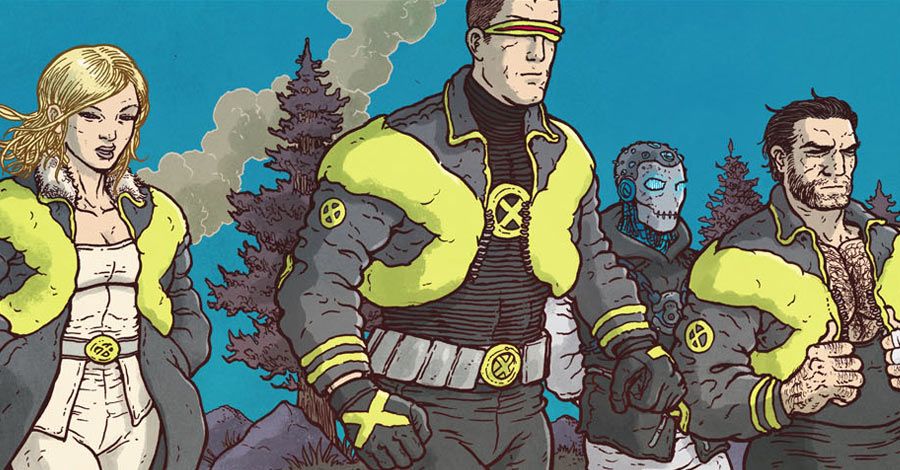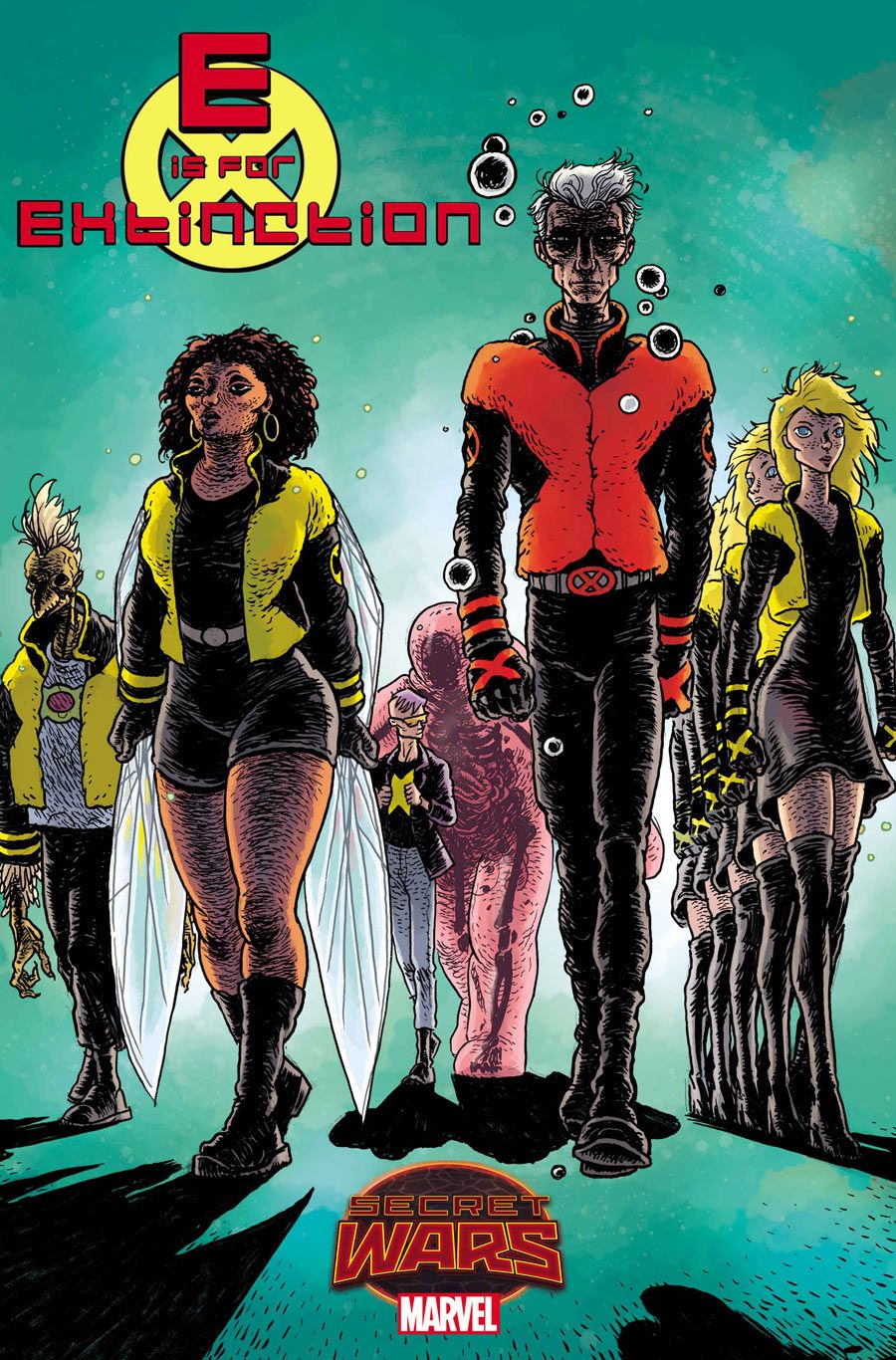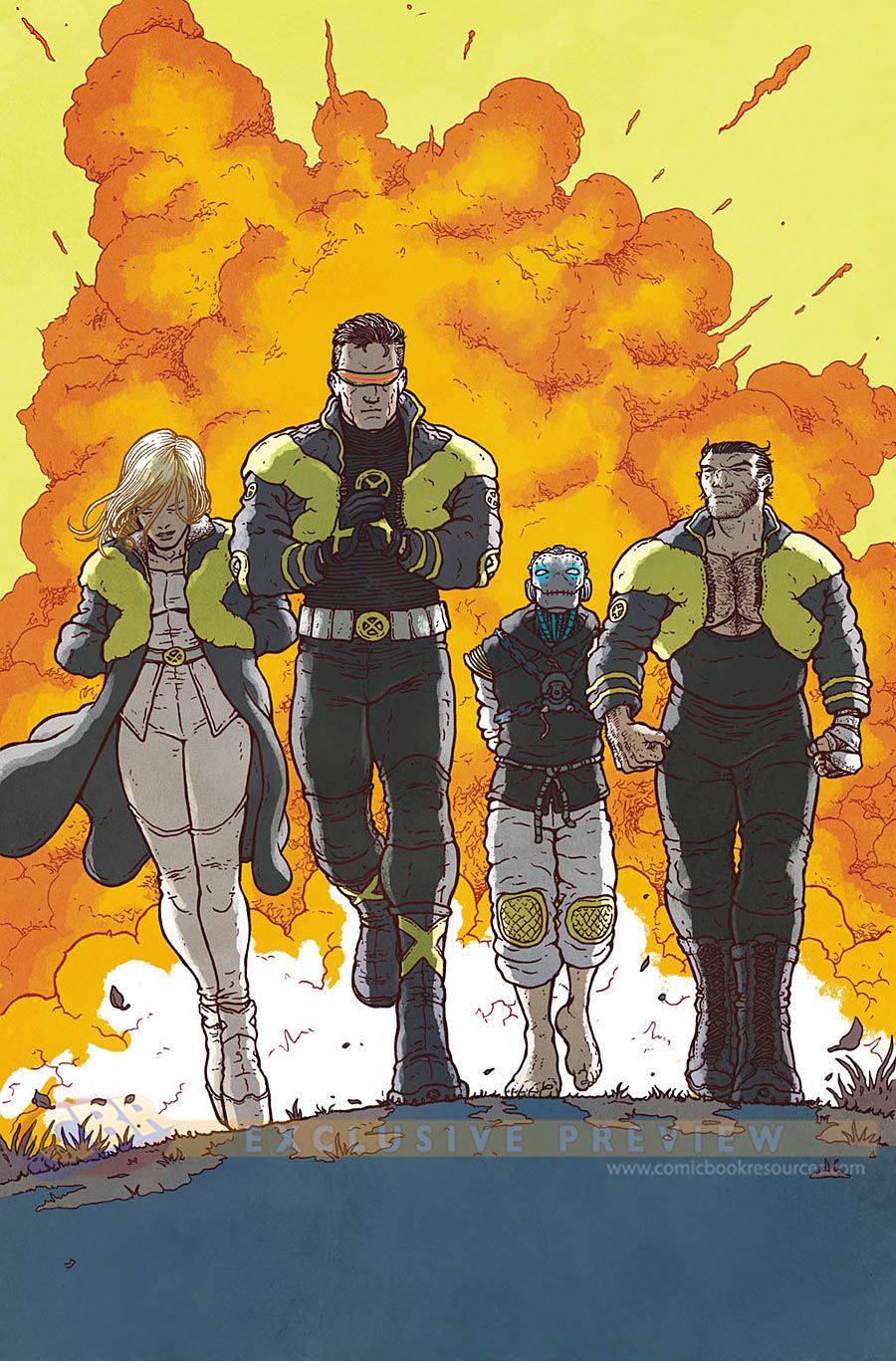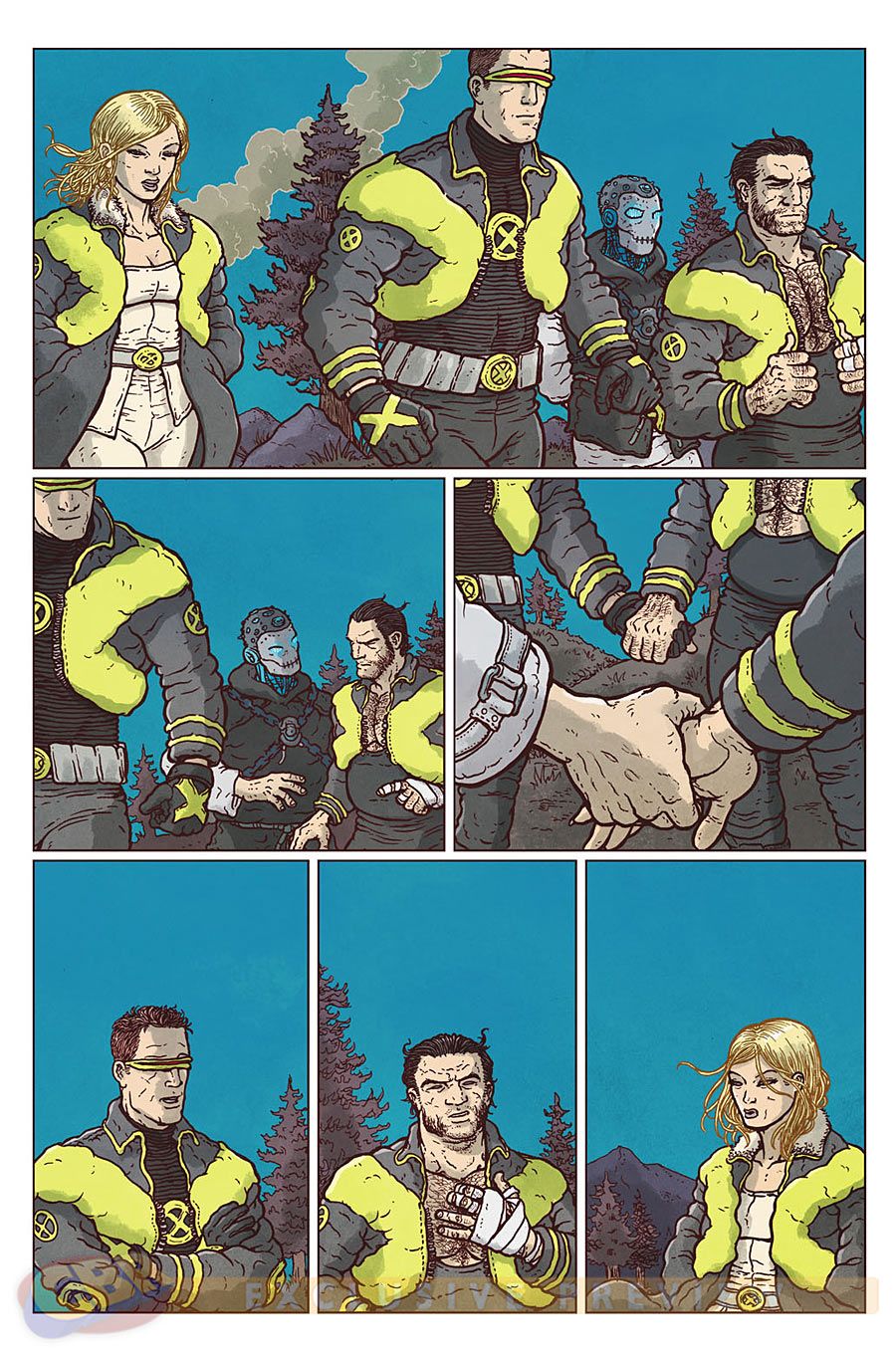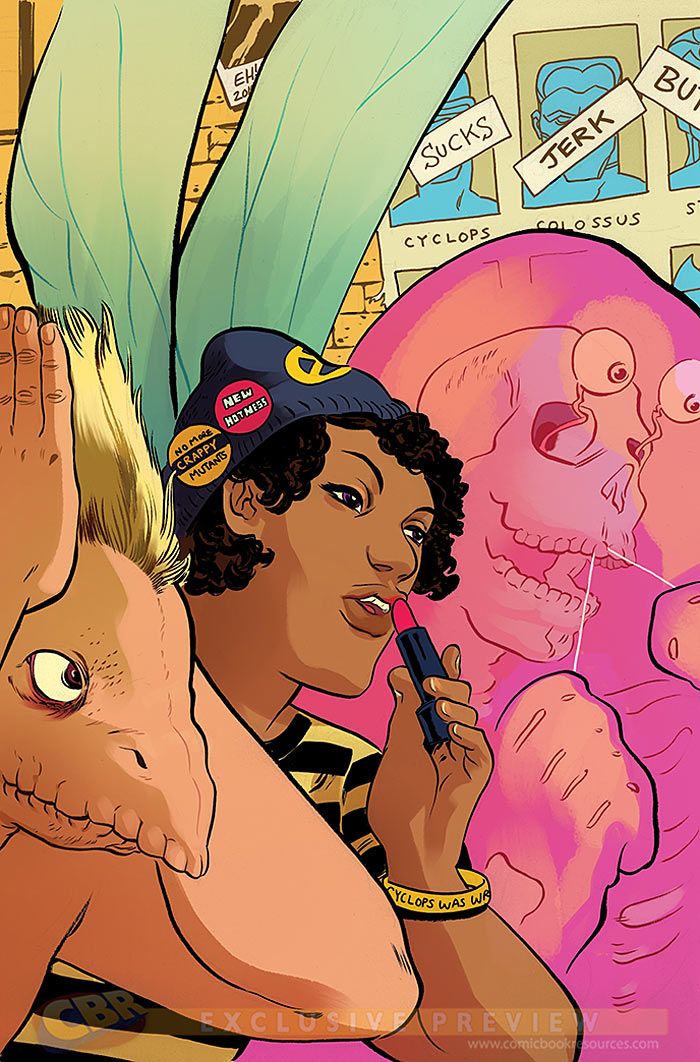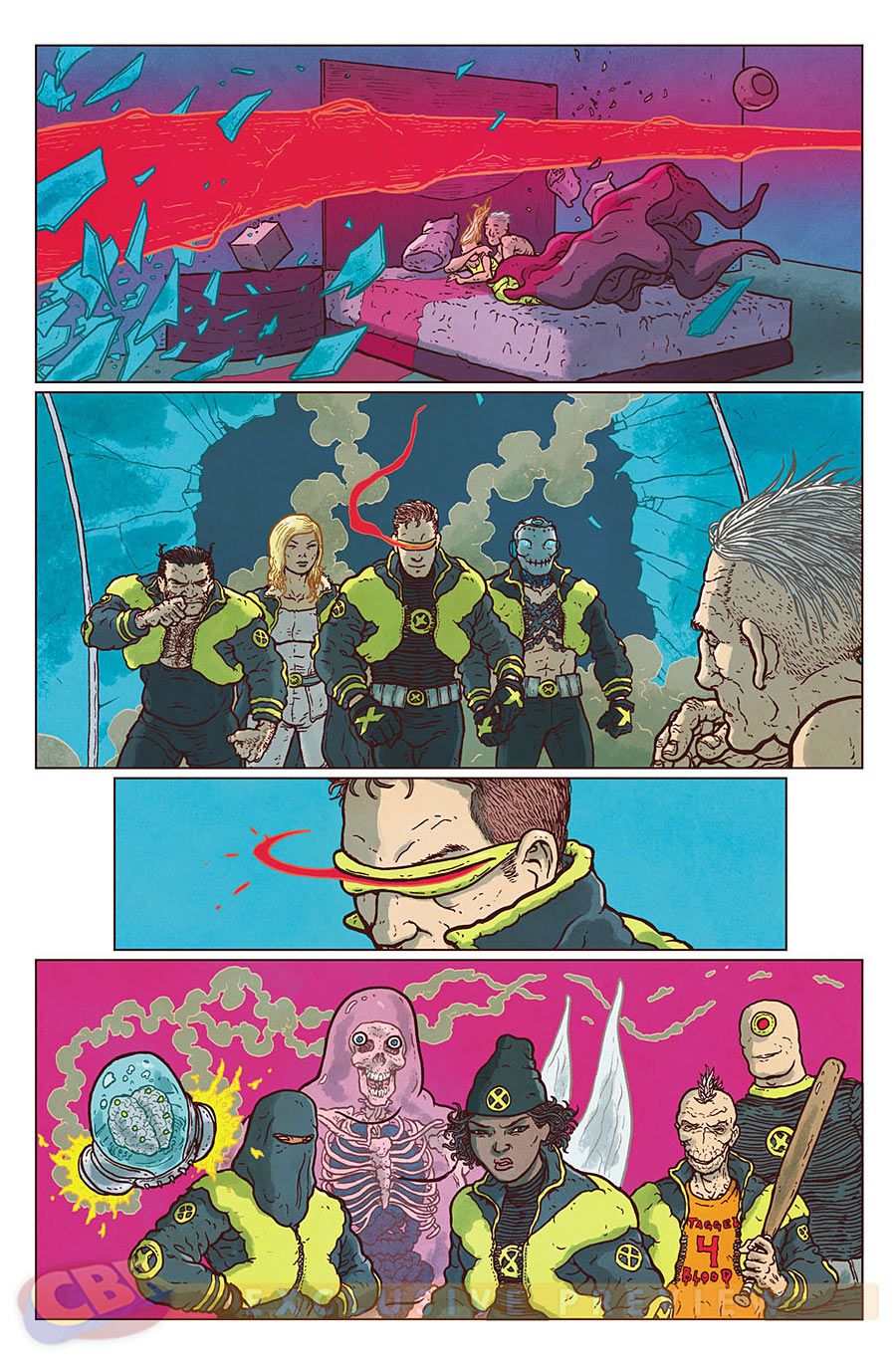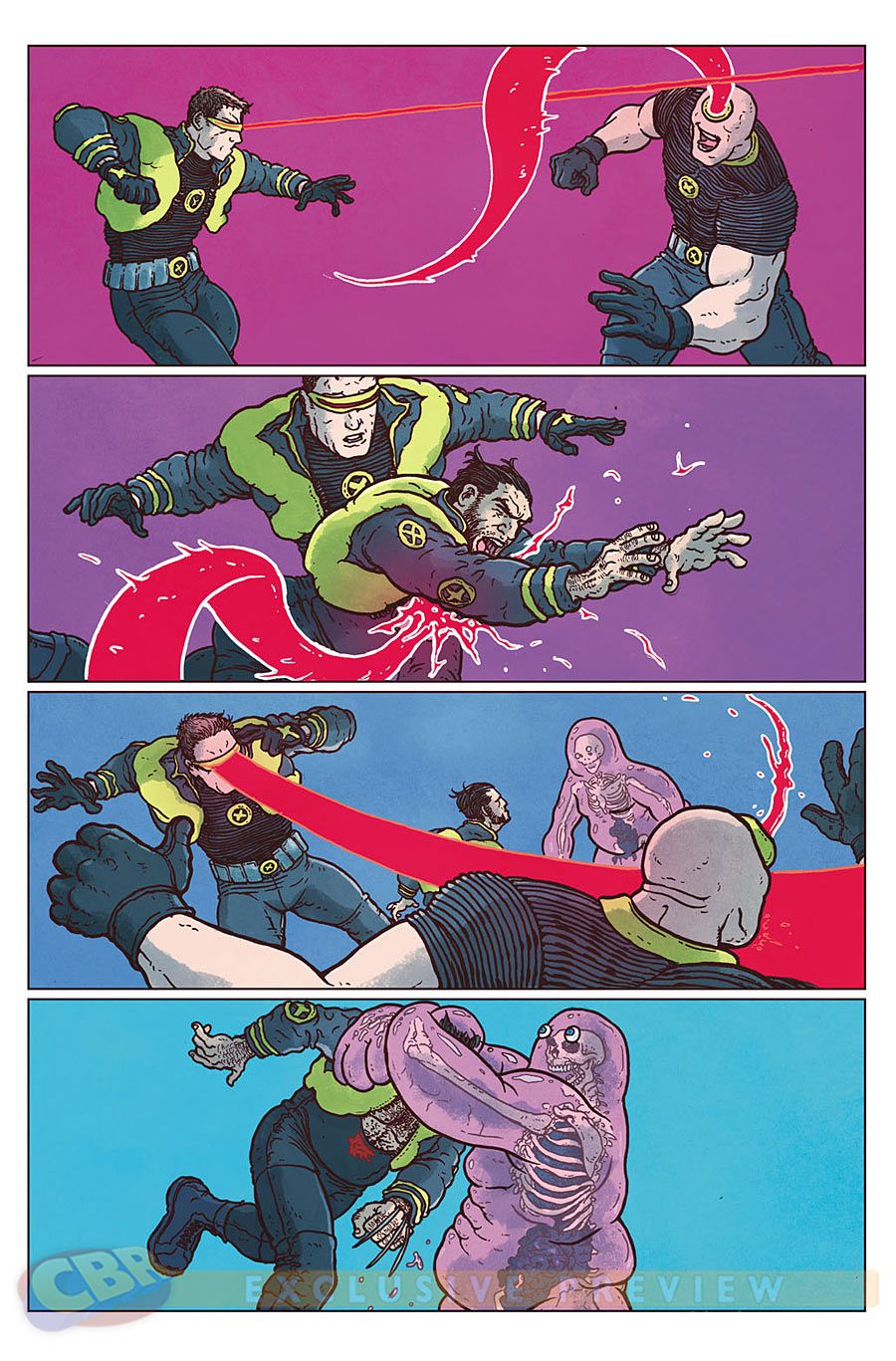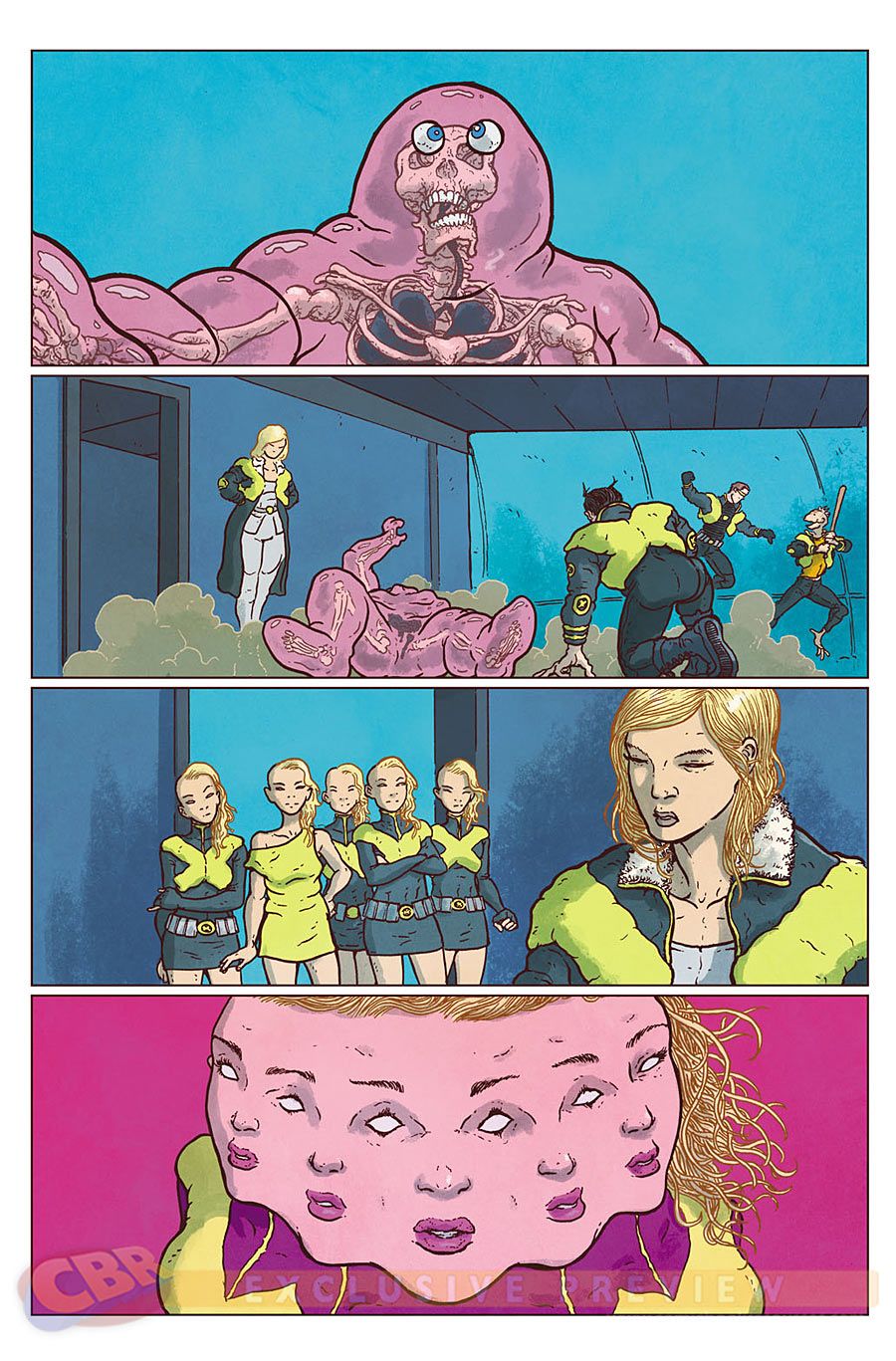In the wake of Cassandra Nova's infiltration of Charles Xavier's mind, things went very differently in the Battleworld domain of Mutopia. "E is For Extinction," an alternate reality riff on Grant Morrison and Frank Quitely's "New X-Men," features the cast of characters made familiar in the iconic run but placed in the midst of "Secret Wars" -- a reality-warping event that makes anything possible. This time around, Magneto's running the school, secondary mutations are popping up again and the new generation of X-Men are more separated from their predecessors than ever.
Burnham, Culver & Villalobos Establish a Mutopia on Battleworld in "E is For Extinction"
This week, the "E is For Extinction" creative team of writers Chris Burnham & Dennis Culver and artist Ramon Villalobos make their X-POSITION debuts, answering your questions about everything from secondary mutations to the #VillalobosTest.
CBR News: Let's get this week's "E Is For Extinction" extravaganza kicked off with a question from MiddlePegasus.
Considering how iconic the original Grant Morrison/Frank Quitely era of X-Men has become, I have to ask, where were all of you when you first read those initial "New X-Men" stories?
Chris Burnham: I first read them a year or two after the run finished. I was in Chicago, trying to break into comics and doing any remotely art-related job to pay the bills.
Dennis Culver: I've been a big fan of Morrison's work since "Doom Patrol" so I read the issues as they came out. I was living in Long Beach, California and had just moved there from living my whole life in Florida. Exciting times.
Ramon Villalobos: I didn't read them until "Batman R.I.P." was coming out. I hadn't started reading comics until fairly late in the game but I was so hyped about how insane and bold that Batman stuff was so I borrowed all those Batman comics from my friend. And when I was done reading those in a few days, I borrowed all of "New X-Men" and binged on those.
Next up, a fan also named Dennis has a pair of questions for Ramon.
I've never written in before but I just had to take the opportunity to ask Ramon how he is going to tweak the X-Men characters to pass the #VillalobosTest? I mean c'mon! Also, I'm curious about this design work, especially how he felt reimagining the great Frank Quitely.
Villalobos: Ha! I didn't tweak any of the characters to pass the #VillalobosTest. For those in the dark, the #VillalobosTest is a very real, very crucial test I created to see if certain works of art have Mexican representation. To pass, the comic, movie, whatever has to have a Mexican character or actor and if it doesn't then it fails. For this book, there are a couple Mexicans sprinkled in but I've also cast Wolverine as a Mexican since I always assumed the short hairy aggressive guy with dark hair was Mexican -- not Canadian. So really, I really crushed my own test. I'm pretty pleased with myself.

For the design work, I definitely am not reinventing the wheel, where Frank Quitely did so much quality costumes that still feel fresh and modern now. Mainly what I did was try and recontextualize the same pants/ribbed shirts/jackets for the younger characters who sort of wear the costumes with a little more attitude.
L3G0box wants to know how the alternate reality nature of "Secret Wars" affected your storytelling choices.
Since "Secret Wars" allows for so many different variations and alterations of classic characters, were there any changes you wanted to make to an X-Man that didn't make it to the printed page?
Burnham: One of my initial thoughts was having Beast's secondary mutation really amp up his body dysmorphia problems and actually change him into a woman. But there wasn't really room for that -- if we were going to pull something like that off, it would need to be a full story and not just a zany plot point.
The X-Men books have always been socially conscious, specifically Morrison and Quitely's "New X-Men." nx01a wonders if this is a factor in your series.
I enjoyed Beast giving the full story on mutation; not everyone will end up as a Jean Grey. This is a domain where humans worship mutants to the point of wanting to harvest and implant mutant eyes that don't work or make sure their child is a mutant but with the chance of having a debilitating "gift." Mutant society also seems very decadent, reveling in and celebrating the grotesque, violent, and stupid (personified IMHO in Magneto's New X-Men). Sounds more than a bit like our own society's obsession with celebrities and the desire of some to become them at any cost, even knowing the negative aspects. How much of Mutopia's depiction is social commentary? How did you go about creating a mutant culture and how will we see that culture expressed?
Burnham: There's a bit of social commentary in there. For instance, the U-Men are kind of a metaphor for cultural appropriation. They just want all the cool mutant powers without having to deal with or think about decades of oppression.
Culver: We're picking up a lot of what was left on the table in original run and that stuff is still relevant today.
Villalobos: I do quick sketches of Kim Kardashian every day on my Instagram, so I'm probably not the best person to rail against our society's obsession with celebrities.
X-Men Revisit "E Is For Extinction" During "Secret Wars"
nx01a also has some thoughts about the generational gap depicted in "E is For Extinction.
Magneto's New X-Men are really vicious to the classic/old X-Men. Is that how you see interaction between different generations? Must the young literally see the old as stuck in their ways, and must the old see the young as out of control and dangerous? Magneto's dialogue sounded like he was trying hard to pass as in touch with the youth and hip and all that jazz.
Burnham: I think the ever-present generational divide is a built-in property of humanity's social evolution. Rejecting your parents ideology and figuring things out for yourself is a way to help bad ideas from getting too entrenched, and make sure that as little as possible is taken for granted and everything is examined.
Culver: Magneto has always been a little out of touch. The real question is why are these kids buying into it this time?

Villalobos: The snot-nosed attitude that Chris and Dennis gave the New X-Men in this book is one of my favorite things about working on the book. The kids grew up to be competent and cool and they definitely seem sick of being held up to the standards of what came before them. That's evolution.
And lastly, nx01a has noticed something about the way secondary mutations are depicted in this "Secret Wars" series.
Secondary mutation seems to be limited to the classic/old X-Men. Does age play a part in activating secondary mutations, like a mutant midlife crisis? And what exactly is Cyclops' secondary mutation? He had no control over his optic blasts but now he has control over... lots of different things.
Burnham: I always figured that secondary mutations hit in the late twenties or early thirties... I imagine that Beak and the gang will get secondary mutations if they manage to live that long.
Culver: Scott's secondary mutation makes him a living remote control -- literally and metaphorically. He's changing channels and changing minds.
With so much time having passed since the original "New X-Men" era, Zoo-B-2 has a question about that series' legacy.
Looking at all the new mutants that Morrison and Quitely created for "New X-Men," what makes them so unique and such a draw for you three as creators? Why do you gravitate towards them, and why do you think so many of them -- Quentin, Glob, the Cuckoos -- are still around 15 years later?
Burnham: The X-Men were always about throwing a bunch of poop at the wall and keeping what sticks. Grant Morrison and Frank Quitely have really good pitching arms. And eat a lot of bubble gum.
Culver: That run is without question a milestone of the X-Men legacy. It felt completely new and yet familiar when it all came out originally and you can't help but be drawn to those powerful ideas. Magnetic work.
Villalobos: I love how weird and cool those kids look. It's not like the vast majority of the original X-Men roster where it was a bunch of attractive white kids. Some of these kids like Glob and Beak look gross and they 100% don't care. They're the new rockstars. They're Kanye West in leather black jeans on "Black Skinhead." They're the best.
With Battleworld ruled by Doom, Master of Sound is curious about how much of an interest he will take in Mutopia.
It seems mutants are accepted in Mutopia, but the God of Battleworld, Doom, is not a big fan of mutants. Will we see any interaction with Doom or his forces, or is this an area of Battleworld Doom does not take an interest in?
Burnham: There are a few passing mentions of Doom, but he's not really a presence in this story. Our X-Men have enough problems without him, thank you very much!
Culver: As our story progresses, however, readers will find that things could affect Battleworld in a very significant way if left unchecked...
And lastly, Master of Sound has one more question about Mutopia's relationship with the wider world.
Will Mutopia at one point somehow interact with other domains?
Burnham: Kinda sorta. We were pretty determined to keep our story as self-contained as possible. I'd like people to be able to read this story in five or ten years as a weird Elseworlds coda to the Morrison/Quitely run and not have to worry about Battleworld GPS coordinates to enjoy it.
Culver: Really, "kinda sorta" is the best we can say right now. Ask us again after issue #2.
Thanks to Chris Burnham, Dennis Culver and Ramon Villalobos for taking on this week's questions!
Next week, "Age of Apocalypse" writer Fabian Nicieza makes his long overdue X-POSITION debut! Have a question for Fabian? Go ahead and send 'em in via an e-mail with the subject line "X-Position" or if 140 character questions are more your speed, try Twitter. But get 'em in quickly, because the deadline's Friday. Make it happen!

